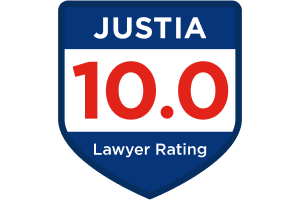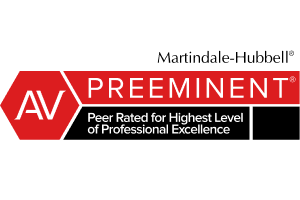How to Evaluate a Claim and Prepare a Demand/Settlement Presentation
AMERICAN ASSOCIATION FOR JUSTICE
2012 WINTER CONVENTION
PHOENIX, ARIZONA
FEBRUARY 11-15, 2012
How to Evaluate a Claim and Prepare a
Demand/Settlement Presentation
by Ira H. Leesfield
Pre-trial Case Evaluation, Powerful Demands, Mediations
and Alternative Dispute Presentations
- How to set apart your settlement evaluation and demand from the thousands of others received by adjusters, claims managers and attorneys?
- How can you be innovative, distinctive and demand the attention of the recipient using state of the art visual techniques?
- How does the timing of your demand and the presentation affect the ultimate outcome?
- Who, exactly, is your audience? Why will they review your submission?
- How do you present the strengths and weaknesses of your case?
- What is the art and science of case evaluation and top dollar case recovery without a verdict?
- How can you excel in the presentation of your liability and damage issues on a budget and without overstating your case?
The above questions, and many more, are the focus of this paper and presentation to the AAJ attendees at the 2012 Winter Convention in Phoenix, Arizona. Statistically, most cases are settled pre-jury selection. How big a role does the preparation and presentation of your case play in your firm ‘s financial success and your client’s well-being? It has been said that “trials make your blood flow, but settlements make your cash flow.” Of course, it has been our firm’s experience that high end verdicts at trial always bring better settlements, so today’s trial lawyer must be determined to go to Court and take a verdict. Not coincidentally, the same trial preparation and effort expended pre-trial will get you the very best results and add to your reputation and settlement return.
In evaluating your claim and preparing your settlement materials, please consider the following approach.
21 Tried and Proven Settlement Techniques to
Enhance your Pre-Trial Recoveries
- Always evaluate your client’s “jury appeal” and the impact of your client’s “story” on jurors.
- If your client does not make a good impression, work with his/her family members, closest friends, neighbors and “before and after” witnesses.
- Get to know your client’s life, his/her achievements, difficulties, involvement in the community, the good, the bad and the ugly, and determine your case negatives and positives.
- Always address the problems of your client’s case up front. Do not try to bury them or finesse them, but rather hit them head-on. (i.e., Was your client intoxicated? Does your client have a prior claim’s history or criminal record?)
- Although every case is unique and individual, do not be afraid to use comparable verdicts/settlements in your presentation and, in particular, represented cases that have been affirmed (Grayson v. U.S.A, 748 F.Supp.854)
- In the appropriate case, use a focus group, and/or jury consultant, to determine the strengths and weaknesses of your case, the dollar value, comparative negligence, and how your message is most powerfully conveyed to the defendants.
- Before you write a settlement demand or present a settlement video, know who your audience is. Who is going to view this information, and if they are not going to receive it at least 15 days in advance of the mediation or trial – – do not bother.
- Settlement demands and materials are most effective when: (1) you have a firm trial date; (2) the case has been reasonably discovered; and (3) you have determined what your strengths and weaknesses are.
- At all costs, avoid “routine, generic, run-of-the-mill, standard, look-alike, copy cat” demand letters and settlement materials. Think about the defense lawyer and claims adjuster who sees thousands of similar products every year.
- Be creative! Be creative! Be creative! Make your settlement evaluation different and distinctive by the use of available technology exhibits, Internet research, YouTube, websites, testimonials, Internet information and use an approach that varies significantly with each client and case.
- If your case has a “bad faith” aspect or otherwise has high importance to corporate executives, be sure that multiple copies of your demand materials are delivered to defense counsel with a letter, specifically requesting that he forward the copies of the materials you have provided. Be sure your cover letter protects the confidential and copyrighted value of your information and requires permission for reproduction.
- Settlement demands should be time limited with an offer to extend your deadline by request of the defendants, if necessary. This will enable you to get the ultimate authority from the defendants if bureaucracy slows them down.
- Use comparable verdicts/settlements from jury research, Internet, Thomson West, and other sources, as an exhibit in your settlement demand, breaking it into two categories: (A) Comparable verdicts/settlements of your firm to let them know your track record, and (B) Comparable verdicts/settlements surrounding your jurisdiction, achieved by other counsel and colleagues.
- After you compile your settlement materials, be sure they are presented in a clear, logistical, organized and compelling fashion with NO typographical errors, misspelled words or any defect that would indicate to the viewer that you are hurried, sloppy, careless or unprepared. The quality of this work product lets them know your standard for trial presentation.
- Be sure to hold back some valuable evidence for use at trial. It is not necessary to divulge or reveal your entire case, the defendant’s vulnerability and the stakes or devastating trial testimony to get your case settled. Resist the temptation to “spill the beans” in your pre-trial demand.
- Try to match the personality, life experiences and outlook of your mediator with your client and case. Mediators, like judges, have preferences, personality and life histories, and the right mediator, by experience, gender, age and family history, may identify more with your client. If you do not know the mediator being suggested, feel free to check with others in your community.
- Consider bringing one of your key experts to mediation or taking a videotaped settlement of a key witness or expert and using it as part of the settlement process. Witnesses can be videotaped via teleconferencing at a cost saving to you. If you live in Arizona and have an eye witness to an intersection collision living in Maine, who “nails” the defendant for speeding and running the light, using that witness videotape as part of your settlement materials and at mediation.
- Spend some quality time with your clients going through their photo albums, scrap books, memorabilia, awards, certificates, report cards, and any other materials that helps tell your client’s story. In a wrongful death case, your job at a settlement conference is to make the case three-dimensional and come to life. A short video production “Day in the Life” film can provide powerful insight into your family’s loss.
- In a catastrophic case, the use of a life care plan, economist, and a videotape presentation of your client’s difficult daily routine is essential to the complete recovery by settlement. The video should include each important daily activity, including hygiene, transportation and daily care by attendants and family.
- When outsourcing the compilation of settlement materials, videos and visual presentation, do not give your independent contractor carte blanche authority, permission or creative license to “do a good job.” You must stay involved with the families, friends and community of your client. Interview them yourself and make value judgments as to who will have the greatest impact on the viewer. The written product may work, the media presentation is better, but do not be afraid to bring a few key witnesses and family members to the mediation. If the client is a child who has been injured or deceased, bring other children to the mediation, so the decision makers can see the quality of the client’s life.
- When preparing your settlement demand and evaluating your claim, go back to the first day of your intake, notes and client interview. Ask yourself, (a) Why did I take this case? (b) Why did I agree to spend large amounts of monies in costs, and years of my life working with these clients? (c) What motivated me and impressed me initially? Reconstruct those thoughts and concepts as the outline for your settlement demand.







